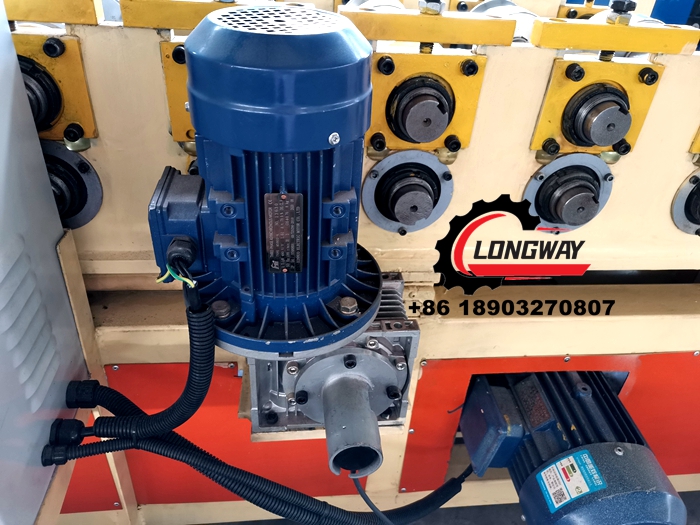purlin making machine factory
The Evolution of Purlin Making Machines A Comprehensive Look at Factory Production
In the realm of construction and manufacturing, purlins play a crucial role in the structural integrity of various buildings, particularly in the creation of metal buildings. These horizontal beams are essential components that provide support for roofs and walls, making them an indispensable part of engineering designs. The efficiency and quality of purlins are largely dependent on the machinery used in their production. This brings us to the fascinating world of purlin making machines, a vital innovation in factory settings that has revolutionized the construction industry.
Understanding Purlins
Purlins are usually made from steel or aluminum and come in various shapes and sizes, including C, Z, and U profiles, depending on the structural requirements. Their primary function is to support the roof and wall panels of a structure, aiding in the distribution of loads to the main frame. The manufacturing process of purlins has evolved significantly over the years, driven by technological advancements and increasing demand for efficiency.
The Role of Purlin Making Machines
Purlin making machines are specialized equipment designed to manufacture purlins at scale. These machines automate the production process, leading to significant reductions in labor costs and time, while also enhancing precision in the final products. A typical purlin making machine consists of several components, including a decoiler (for unwinding steel coils), a roll forming machine (for shaping the metal), a cutting system (for sizing the purlins), and a stacking system (for organizing finished products).
The Production Process
The production process begins with raw material input. Steel coils are fed into the decoiler, which unrolls the coils and prepares the material for processing. The steel is then shaped into the desired profile through a series of rollers in the roll forming machine. This process involves carefully coordinated engineering to ensure that each pass through the machine molds the material accurately according to specifications.
Once the desired shape is achieved, the purlins are cut to length using a shear cutting system. This stage requires high precision, as even minor discrepancies can affect the structural integrity of the building where they are installed. Finally, the finished purlins are stacked and prepared for dispatch to construction sites.
purlin making machine factory

Advantages of Automated Production
One of the most significant advantages of using purlin making machines is the consistency and uniformity they bring to manufacturing. Automated systems reduce the chances of human error, leading to high-quality products that meet industry standards. Additionally, the speed of production is vastly increased, allowing manufacturers to fulfill larger orders in shorter timeframes. This efficiency is particularly crucial in a competitive market where time and cost-effectiveness can determine the success of a project.
Another benefit is the versatility of modern purlin making machines. Many of these machines can be adjusted to produce different profiles and sizes of purlins with minimal downtime. This flexibility allows manufacturers to cater to various customer needs without the need for extensive reconfiguration of their production lines.
Environmental Considerations
As industries worldwide are increasingly focusing on sustainability, purlin making machines are becoming more energy-efficient. Manufacturers are developing systems that reduce waste and allow for recycling of scrap materials, which not only helps in conserving resources but also reduces production costs. Moreover, the use of advanced technologies has led to machines that require less energy, further decreasing the environmental footprint of purlin production.
Future Prospects
The future of purlin making machines appears bright, especially with the ongoing advancements in technology. Innovations such as robotics and artificial intelligence could lead to even greater efficiencies and capabilities. Moreover, the integration of smart manufacturing solutions will enable better data tracking and analysis, optimizing the production process further.
In conclusion, purlin making machines have transformed the way purlins are produced, making the process faster, more efficient, and environmentally friendly. As the demand for durable and reliable building materials continues to rise, the importance of these machines in factory settings cannot be understated. As technology evolves, manufacturers are poised to take advantage of new developments that will continue to streamline the production of purlins, ensuring that they remain a vital component in modern construction.
-
Roof Panel Machines: Buying Guide, Types, and PricingNewsJul.04, 2025
-
Purlin Machines: Types, Features, and Pricing GuideNewsJul.04, 2025
-
Metal Embossing Machines: Types, Applications, and Buying GuideNewsJul.04, 2025
-
Gutter Machines: Features, Types, and Cost BreakdownNewsJul.04, 2025
-
Cut to Length Line: Overview, Equipment, and Buying GuideNewsJul.04, 2025
-
Auto Stacker: Features, Applications, and Cost BreakdownNewsJul.04, 2025
-
Top Drywall Profile Machine Models for SaleNewsJun.05, 2025








